-
1 of 253523 objects
King Philip II of Spain (1527-98) c. 1544
Bronze | 88.9 x 57.5 x 30.5 cm (whole object) | RCIN 35323
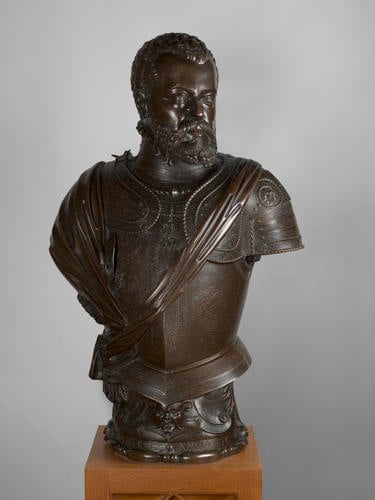

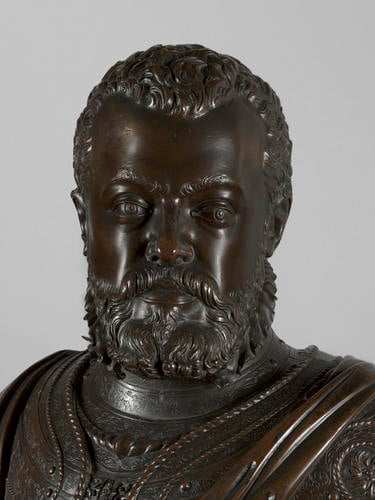
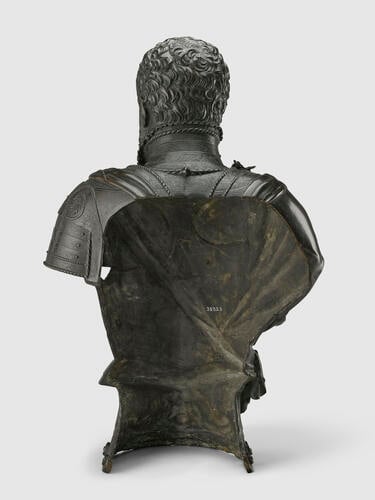
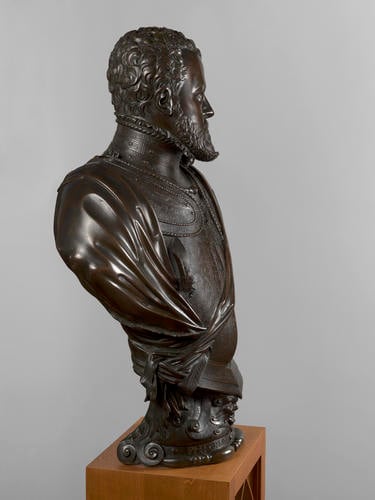
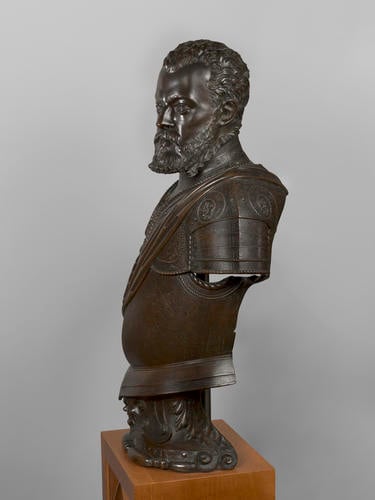
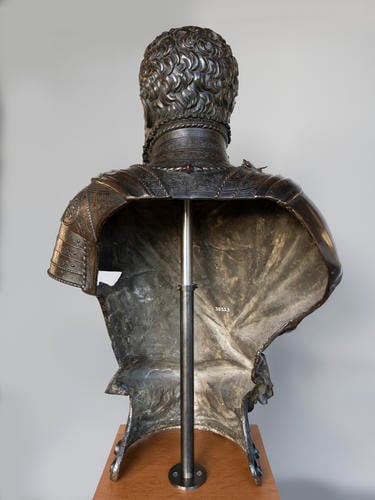
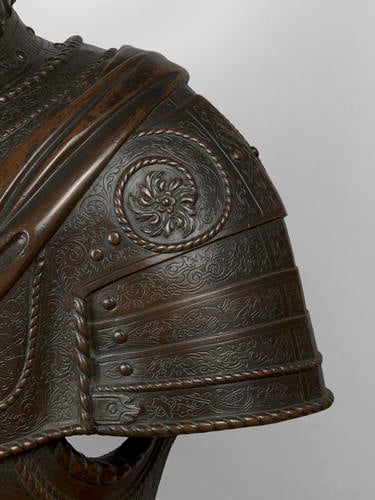
-
A bronze bust of King Philip II of Spain (1527-98), wearing etched armour with the collar and badge of the Order of the Golden Fleece. An oval relief at the centre of the breastplate with a crucifix. Inscribed on the integrally-cast socle: PHI . REX . ANGL . ETC. In the inscription, Philip is designated King of England, reflecting his marriage to Queen Mary at Winchester in July 1554. The bust must have been made before January 1556, when he succeeded his father Charles V as King of Spain.
Half-figure without arms. Wearing armour. The head is turned sharply to the sitter’s left. The hair is flatly and solidly modelled, receding to the sides of the high forehead. The eyebrows are raised above incised eyes. The jutting jaw is covered by a short but continuous beard which is joined by a full moustache which mostly obscures the upper lip but from which the lower lip protrudes. A frilled collar overlaps the high gorget which is formed of three plates. The armour is precisely rendered, with asymmetric pauldrons, of which the proper-right is attached at the top by a buckled strap. A furled sash passes over the proper left shoulder to a knot at the right side of the waist, passing over the end of a fringed cloak which is draped over the right shoulder. A realistically fashioned lance-rest is attached to the centre of the proper-right breastplate. The collar of the Golden Fleece passes under the pauldrons so that only two links are visible at the centre, from which the badge is suspended. Below that is a low relief of the cross supporting the instruments of the Passion within an oblong scrolled cartouche. The cuirass terminates at the waist with a canted band in two superimposed plates ending in a point at the front. The bust is supported on an integrally cast d-shaped socle with a bead-and-billet lower moulding. At the centre of the front is a grotesque mask with radiating strapwork, while the back edges are wrapped with acanthus leaves, all modelled in relatively bold relief. Above the lower edge is a plain band with a cast inscription in raised capitals: • PHI • REX • ANGL • ETC.
Philip II was married to Queen Mary I of England at Winchester on 25 July 1554, remaining in England until 4 September 1555 when he departed for the Netherlands. On 8 September there occurred the celebrated meeting with his ailing and exhausted father, the Holy Roman Emperor at Brussels, where Charles V renounced all his titles and lands except for the empire itself in favour of his son. Philip’s aunt, Mary of Hungary, resigned her status as governor of the Netherlands, of which Philip became king. The kingdom of Spain and its dominions were formally transferred to him in January 1556. The designation 'Rex Angliae etc.' is therefore unlikely to have been used for a portrait made outside this narrow interval. The bust must therefore have followed fairly closely the completion in 1553 of the great pedestrian statue of the prince in a rich parade armour, on which Leone and Pompeo Leoni collaborated in Milan. Whereas in the statue everything is done to emphasise Philip’s youthful vigour – the hair which seems in the act of sprouting, the crimped and pleated collar, the heroic stance and the sculptural quality of the armour - all these features seem subdued or suppressed in the case of the bust.
Text adapted from Sculpture in the Collection of His Majesty The King (2025)Provenance
Commissioned by Fernando Alvarez de Toledo, Duke of Alba (1507–82); at the castle of Alba de Tormes near Salamanca in 1800; George Watson Taylor sale, Christie's, 28 May 1825, lot 67; bought by Robert Fogg for George IV, £52 10s. Placed in Store at Carlton House; dispacted to Windsor, 12 Nov. 1828. In the Queen's Guard Chamber in 1905.
-
Creator(s)
(sculptor)(nationality)Acquirer(s)
-
Medium and techniques
Bronze
Measurements
88.9 x 57.5 x 30.5 cm (whole object)